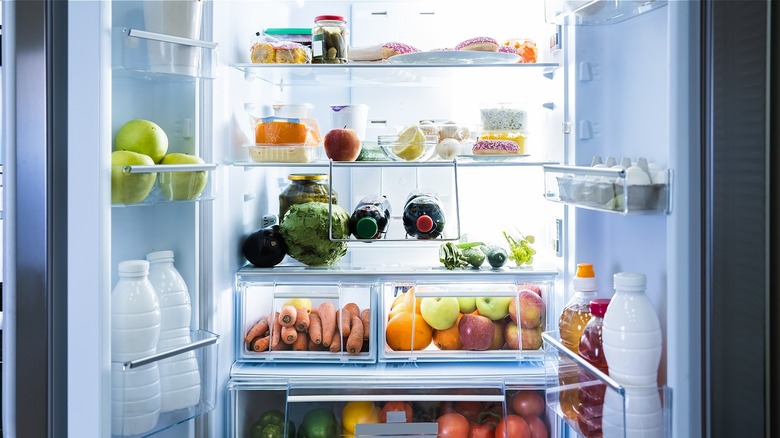Why You Shouldn't Store Raw And Cooked Foods Together
We often think of the refrigerator as a magical box for keeping our cooked and raw foods safe, but dire health consequences can ensue if you do not store your food correctly.
Organization is the key to averting stomach ailments, of which raw meat can be an instigator. Raw meat should be compartmentalized into a separate storage area, as it is done in restaurant kitchens (per the National Restaurant Association Educational Foundation). This is not always possible in a domestic kitchen — when storing raw meat in your refrigerator at home, make sure it is in a sealed container. It should also never be refrigerated for longer than two days, per the U.S. Department of Agriculture.
By following these directions, the raw meat should not touch anything cooked. If it leaks, the moisture will remain trapped in the container along with any accompanying bacteria. These sealed containers should be stored at the bottom of the refrigerator, per the Better Health Channel.
Understanding the purpose of safety measures
We cook our foods to reduce bacterial and toxicity risks, per WebMD. Should we ingest raw foods, we run the chance of developing food poisoning. The fact that some of us find raw food unappealing saves us from becoming violently ill, but ailments can still develop via cross-contamination.
Unfrozen raw meats are particularly dangerous, according to the Centers for Disease Control and Prevention. They can carry bacteria like campylobacter and salmonella, which lead to food poisoning. Cross-contamination can occur when raw meat comes into contact with ready-to-eat items like fruits, salads, and leftovers that we bite into without cooking (or rinsing, in the case of fruit and vegetables).
A safe practice is to store ready-to-eat foods above your meat in the refrigerator. Items like jerky (dehydrated meats), trail mix, chocolate bars, and most fruits and vegetables may not need not go into the refrigerator, per RV Share. Many of these items can survive in a cool, dry place (like the pantry) and out of harm's way.

